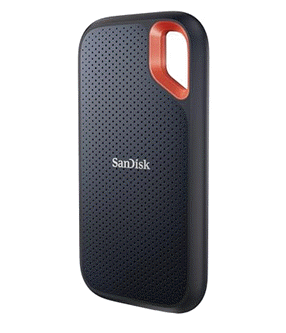2025-07-05 16:52:00
viksit.substack.com
Modern agentic architectures rely heavily on chaining LLM calls. A typical pattern looks like:
-
Use an LLM to decide which tool to invoke
-
Call the tool (e.g. search, calculator, API)
-
Use another LLM call to interpret the result and generate a final response
This structure is easy to reason about, simple to prototype, and generalizes well.
But it scales poorly.
Each LLM call incurs latency, cost, and token overhead. More subtly, it compounds context: every step includes not only the original query, but intermediate outputs and scratchpad logic from earlier prompts. This creates a growing burden on both inference and model performance.
The consequence is that most agent stacks are paying GPT-4 to do what amounts to classical control flow — tool selection — with no reuse, no abstraction, and no efficiency gains at scale.
Instead of using an LLM to route between tools, we can model the decision as a trainable function. A differentiable controller learns tool selection from data — typically via reinforcement or supervised fine-tuning — and runs entirely outside the LLM.
The benefits are architectural:
-
Local execution — avoids external API calls
-
Determinism — removes stochastic sampling from routing
-
Composability — integrates natively with PyTorch / DSPy pipelines
-
Control — tool choice is explainable and debuggable
A minimal examples looks like this (PyTorch):
This is a simple 4-layer network: input is tokenized text; output is a softmax distribution over tools. Because it’s differentiable, you can backpropagate from downstream task reward and improve the router over time.
We can either get data from existing logs, or use GPT to create a synthetic dataset. (Our costs will be one time per tool controller, vs LLM calls for them in production).
We use a simple Adam optimizer to train this simple controller.
And finally, the demo!
For completeness, this is how we’d do it via an LLM directly.
And as a bonus, here’s how you would integrate it into a DSPy Pipeline.
Prompt-based planners incur a hidden penalty: context inflation.
Each new prompt must reintroduce the full conversation history, prior decisions, and any scratch output. The result is exponential growth in irrelevant tokens, particularly in multi-hop workflows.
This leads to:
-
Token tax — redundant tokens sent repeatedly
-
Truncation risk — long contexts hit model limits earlier
-
Attention dilution — more tokens competing for limited compute
-
Leakage — planner logic unintentionally affects final output
By contrast, a differentiable router operates entirely out-of-band. The only input to the final LLM call is the original query and the selected tool’s result. Context length is constant regardless of tool depth.
This architectural separation restores clarity to the final model call — reducing hallucinations, improving determinism, and reclaiming inference capacity for core reasoning.
The shift to differentiable routing mirrors a broader trend:
Separating declarative control logic from generative inference.
Current agentic systems blur this line. Tool selection is handled in the same modality — and often the same model — as natural language generation. This creates coupling where there should be composition.
Differentiable programming is one way to decouple the two:
-
LLMs focus on generation and synthesis
-
Lightweight neural modules handle routing, orchestration, and control
The result is a more modular, inspectable, and scalable architecture — one that avoids paying transformer inference costs for classical programming constructs.
To drive this home, lets consider a planner that routes queries between a search API and a calculator tool. Each query invokes:
At GPT-4.1 prices (75 input / 75 output tokens per call), this costs:
A 3× reduction in cost per run — with larger savings as tool chains grow in complexity.
In early-stage workflows, LLM routing is fast to implement and flexible to extend. But at scale, it’s structurally inefficient — economically and architecturally.
Differentiable controllers offer an excellent alternative. They reduce cost, improve performance, and clarify model behavior. They mark a step toward LLM systems that look less like prompt chains — and more like programs.
Keep your files stored safely and securely with the SanDisk 2TB Extreme Portable SSD. With over 69,505 ratings and an impressive 4.6 out of 5 stars, this product has been purchased over 8K+ times in the past month. At only $129.99, this Amazon’s Choice product is a must-have for secure file storage.
Help keep private content private with the included password protection featuring 256-bit AES hardware encryption. Order now for just $129.99 on Amazon!
Help Power Techcratic’s Future – Scan To Support
If Techcratic’s content and insights have helped you, consider giving back by supporting the platform with crypto. Every contribution makes a difference, whether it’s for high-quality content, server maintenance, or future updates. Techcratic is constantly evolving, and your support helps drive that progress.
As a solo operator who wears all the hats, creating content, managing the tech, and running the site, your support allows me to stay focused on delivering valuable resources. Your support keeps everything running smoothly and enables me to continue creating the content you love. I’m deeply grateful for your support, it truly means the world to me! Thank you!
|
BITCOIN
bc1qlszw7elx2qahjwvaryh0tkgg8y68enw30gpvge Scan the QR code with your crypto wallet app |
|
DOGECOIN
D64GwvvYQxFXYyan3oQCrmWfidf6T3JpBA Scan the QR code with your crypto wallet app |
|
ETHEREUM
0xe9BC980DF3d985730dA827996B43E4A62CCBAA7a Scan the QR code with your crypto wallet app |
Please read the Privacy and Security Disclaimer on how Techcratic handles your support.
Disclaimer: As an Amazon Associate, Techcratic may earn from qualifying purchases.

















































































































